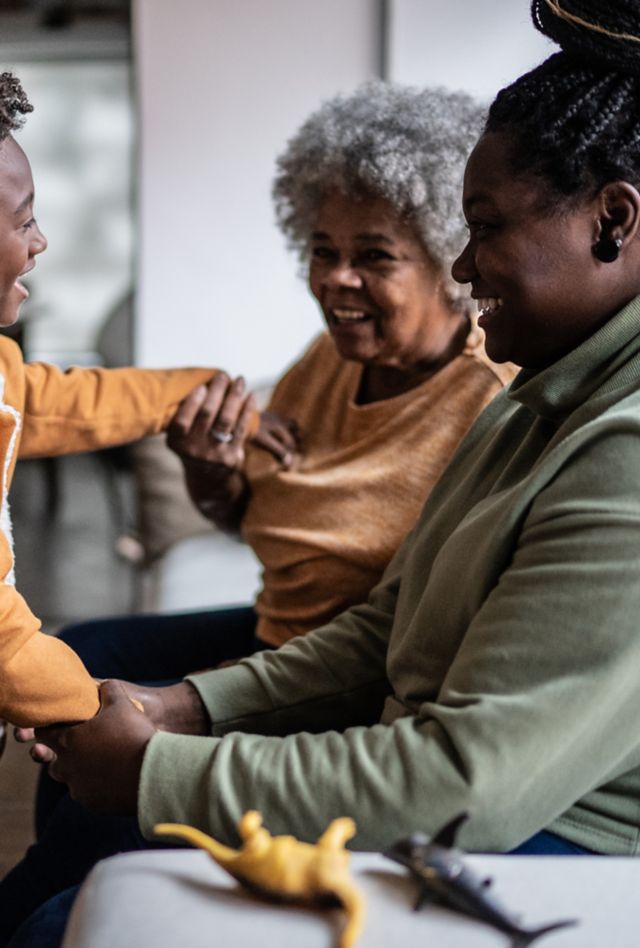Nearly One in Nine Americans Has Bilateral Hearing Loss

This article is from our NORC Now newsletter. Subscribe today.
April 2024
A landmark NORC study explores the demographic and geographic distribution of this common condition to the county level.
A groundbreaking NORC at the University of Chicago study for the Centers for Disease Control and Prevention (CDC) recently revealed that 37.9 million Americans have hearing loss in both ears. It also found that bilateral hearing loss grows exponentially after age 35, to one in three people ages 65 to 75 and about three out of four people age 75 and older.
“Despite being an extremely common condition that can significantly impact health, well-being, and longevity, there were no U.S. geographic prevalence estimates on bilateral hearing loss before our analysis,” said David Rein, a senior fellow in NORC’s Public Health department. “To fill this void, we gathered a diverse group of in-house experts from across NORC and consulted with outside partners.”
We integrated data from multiple sources to create small-area estimation models.
Our multidisciplinary team employed audiology examination data from the National Health and Nutrition Examination Survey, information from Medicare claims and encounters, and several other sources—including the U.S. Census Bureau’s American Community Survey—to create small-area estimation models that examined the demographic and geographic distribution of hearing loss nationwide. We used the American Speech-Language-Hearing Association’s definitions to categorize people as having normal hearing, mild hearing loss, or moderate or worse hearing loss.
Age correlates strongly with hearing loss, but geography matters, too.
We found that in 2019, nearly 25 million people had mild hearing loss and 13 million had moderate or worse hearing loss. Men (13.1 percent), non-Hispanic whites (14.6 percent), and rural residents were most affected. The states with the highest prevalence rates (14 percent or higher) were West Virginia, Maine, Montana, Wyoming, Vermont, New Mexico, Oklahoma, Kentucky, Arkansas, and Oregon.
“Aging is the top risk factor for hearing loss,” Rein said. “However, our study also discovered that where you live makes a difference.”
Surprisingly, rural Americans were more prone to hearing loss than urbanites who lived in densely populated high-traffic areas. This may be the result of rural outdoor work that employs heavy, noisy machinery or recreational activities using all-terrain vehicles or firearms.
SoundCheckMap.org visualizes our findings and provides helpful resources.
To make these and other findings broadly accessible, the CDC gave us the latitude to depict our scientific data in a compelling, interactive, visual way: a Sound Check Map. The map allows users to search by location and other filters—including age, gender, race, and ethnicity—and uses data overlays such as poverty rate or audiologists per capita.
The biggest challenge was conceptualizing how to build an educational website around our interactive map. For this, we partnered with outside experts and organizations to create hearing loss resources for diverse audiences and web developers who helped build an educational site to house all of it.
“We are excited that our peer-reviewed article was published in The Lancet Regional Health-Americas and that our findings, mapping tool, and educational website were covered by hundreds of print and broadcast media, including the Washington Post and National Public Radio,” said Rein. “We hope this coverage will bring our study and these resources to the attention of public health officials, policymakers, and others who can help understand, prevent, diagnose, and manage hearing loss.”
This article is from our flagship newsletter, NORC Now. NORC Now keeps you informed of the full breadth of NORC’s work, the questions we help our clients answer, and the issues we help them address.








